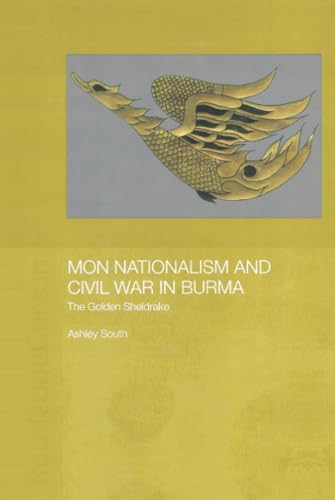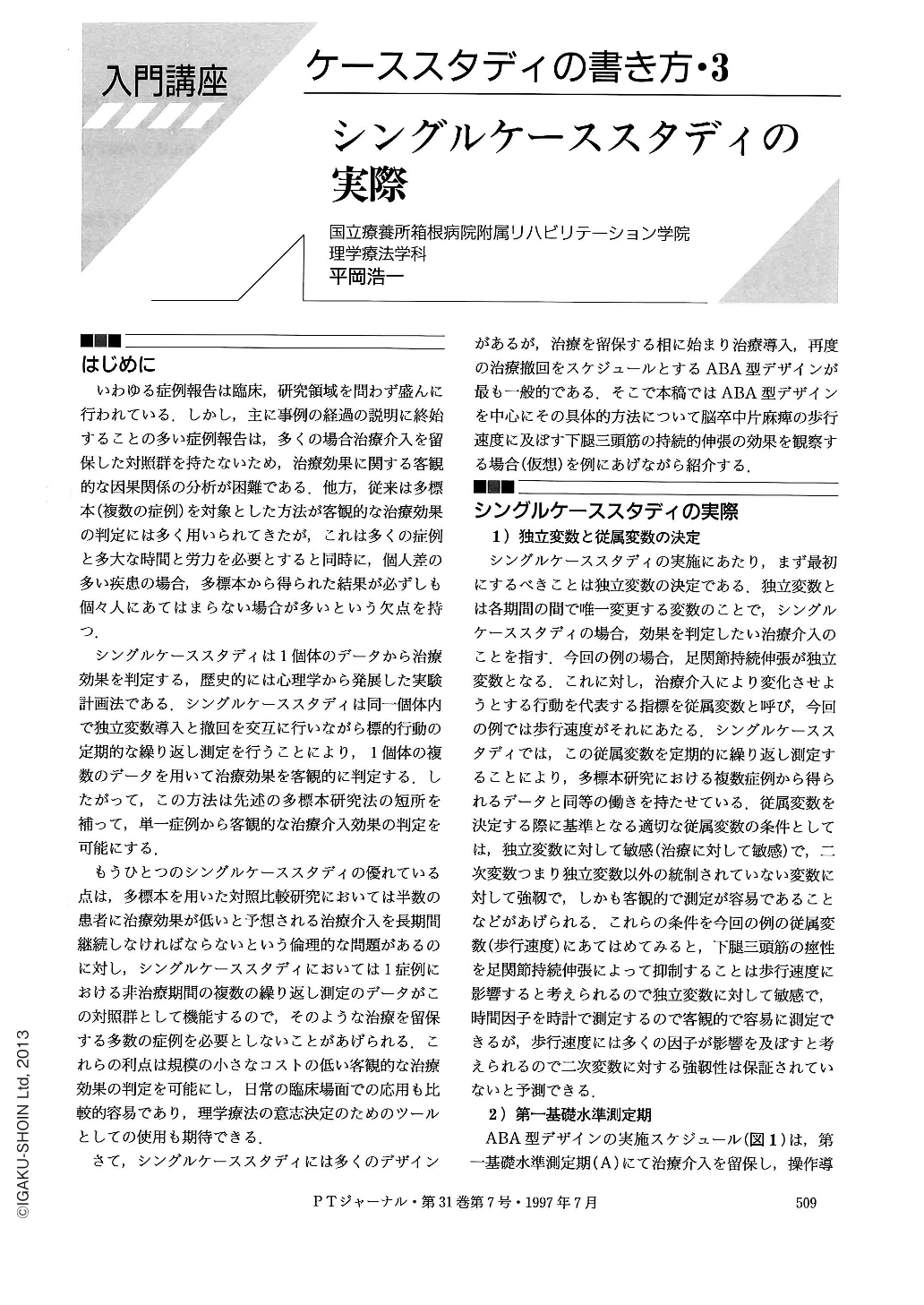2 0 0 0 OA 美容の社会学序説 : 美容行為の性差(勝部元教授退任記念号)
- 著者
- 飯島 伸子
- 出版者
- 桃山学院大学
- 雑誌
- 桃山学院大学社会学論集 (ISSN:02876647)
- 巻号頁・発行日
- vol.21, no.2, pp.151-174, 1988-03-01
2 0 0 0 IR 近世ポーランド・リトアニア共和国におけるルテニア--教会合同問題にみる諸階層
- 著者
- 福嶋 千穂
- 出版者
- 北海道大学スラブ研究センター
- 雑誌
- スラヴ研究 (ISSN:05626579)
- 巻号頁・発行日
- no.58, pp.197-227[含 英語文要旨], 2011
The early modern composite-monarchy Polish-Lithuanian Commonwealth possessed Ruthenian lands on its Eastern borderlands. Ruthenia had its historical roots in Kievan Rus, and kept the Orthodox faith within the Catholic-dominant Commonwealth. Orthodoxy (Kievan Metropolitanate) represented Ruthenia's peculiar regionalism, while Ruthenia had never been given any administrative entity in the Commonwealth. Orthodoxy, which had been tightly connected with Ruthenian regional and ethnic identity, began to be challenged when the Orthodox higher clergy in Ruthenia declared church union with the Catholic Church (Union of Brest, 1596). The majority of the hierarchy accepted Catholic dogma and the Pope's supremacy on condition that Eastern rites and customs be sustained, while the majority of secular nobles resisted this union. After church union, the Ruthenian Church divided into two: the Uniates and the Disuniates (Orthodox). This church union in Ruthenia and its significance have been studied mainly from three perspectives: church history (both Catholic and Orthodox), Ukrainian national history (Eastern-oriented and Western-oriented), and social structure. In this article, I examine a variety of questions arising from the Union of Brest in Ruthenia, by comparing the ways in which those belonging to different social strata attempted to answer them to satisfy their own interests. The Ruthenian nobility, the sole local group with political rights as a political nation of the Commonwealth, considered that all such confessional issues had to be solved by legal processes, that is, parliamentary activities. Since the majority of the secular Ruthenian nobility was against church union, which might threaten their privilege of freedom of faith, they supported the Orthodoxy's rights in parliament. These activities produced results even during the reign of King Sigismund III, who was one of main promoters of the church union. When his successor Vladislaus IV was enthroned in 1632, he was so tolerant of non-Catholic faiths as to allow the Orthodox Church in Ruthenia to restore the legal status of its hierarchy. Nevertheless, this event did not resolve the religious split in Ruthenia. It only meant that both the Uniates and the Orthodoxy became legal entities in the Commonwealth. Both of the Ruthenian Eastern Churches remained as secondary religions, lower than the Roman Catholic Church. Although the secular nobility's support led to the restoration of the Orthodox Church's rights and legal status, the Ruthenian nobility was disposed to convert to Roman Catholicism. The frequent conversion particularly among rich and powerful magnates was detrimental to both of the Eastern Churches. Threatened by this tendency, the two Eastern Churches attempted to find an alternative way of unification. However, while the king supported this plan of reunion, the Roman Curia did not. A more serious challenge hampering the reunion derived from the anti-Uniate and anti-Commonwealth sentiments among the Ruthenian lower stratum and Cossacks mostly willing to gain Muscovite support. Unlike the nobles enjoying the privilege of freedom of faith, the Ruthenian populace suffered physical oppression by the Catholics and Uniates because of their confession. In Southeastern Ruthenia (Ukraine) the Cossacks became the defenders of Orthodoxy from this oppression. In contrast to the nobles (and the Western Ruthenian burghers), these people considered that the achievement in 1632 brought them almost nothing. They saw no particular difference between Uniatism and Roman Catholicism, and regarded both of them as faiths of others', while counting on the Cossacks and the Muscovite tsar as cobelievers. It is possible to conclude that one can observe not only a religious split but also cleavage among social strata and regions within Ruthenia after the Union of Brest. The population of Ruthenia could be divided into two groups according to their attitudes toward confessional questions. One, represented by the nobility, was those attempting to solve them within the limits of the Commonwealth. The other, represented by Cossacks and commoners in the eastern part of Ruthenia, was those ready to solicit support from forces outside the Commonwealth for fear of polonization and latinization. Some Cossack elites could have become an intermediate group between the bipolar identities of Catholic Poland and Orthodox Ruthenia, with their obvious pro-Commonwealth orientation manifested in the Hadiach Agreement (1658). However, their attitude of excluding the Uniates shows that they were no longer the same Ruthenian elites who had accepted the Uniates as an integral part of Ruthenia.
2 0 0 0 OA 国立大学長の選考制度に関する研究 : 選挙制度の定着と学長像(II 研究報告)
- 著者
- 羽田 貴史 金井 徹
- 出版者
- 日本教育行政学会
- 雑誌
- 日本教育行政学会年報 (ISSN:09198393)
- 巻号頁・発行日
- vol.36, pp.158-175, 2010-10-01 (Released:2018-01-09)
The purpose of this paper is to consider the big picture of the presidential appointment system of national universities after World War II and to explore what kinds of presidents were selected under the system. The system of president appointment prevailed in all imperial universities since the system was established in the wake of the Tomizu and Sawayanagi incidents, although legislation to this effect was not fulfilled. This system restricted the constituency of candidates to professors with methods of election : 1) Candidates narrowed down by preliminary committee in advance and 2) A president elected through several elections without a prior selection of candidates. The election system remained with an expansion in the constituency even after the postwar national university system was inaugurated in 1953 which included provision for electing a president independently. In the presidential selection at that time there were only four presidents who were elected at their old universities. The internal promotion system of a president was not a common pattern given the circumstances of antagonism among faculties and the shortage of candidates eligible for president. In addition, "the principal as the professional" that was the personnel transfer route of the Ministry of Education was dismantled because of the system entitling national universities to hold an independent election for presidents. Recommendations of the Central Council for Education (1963) and University Council (1995) pointed out that nearly all presidents actually had little in the way of management skills and that elections tended to become sensational and be favorable for large-scale faculties. The election system, however, has remained in national universities even after these recommendations. The presidents of national universities selected under the postwar election system have had the following characteristics : 1) Almost all national university presidents were selected in their early 60s as they came up to forced retirement as professors of a national university, 2) The number of presidents who graduated from imperial universities or former imperial universities has decreased, and the number of inbred candidates for national universities for presidents has increased, 3) Presidents being given internal promotion have become the majority, and 4) Almost all of these presidents in the postwar period were from the faculties of medicine, technology, science, education, agriculture, or economics. The presidents of national universities have been transformed from being seen as the "president as a symbol of the university" who was a graduate of other imperial universities, which was found at the beginning of the postwar period, to the "president as a symbol of collegiality" selected from his university and well-informed about that particular university. This tendency has remained after national universities were incorporated.
- 著者
- Ashley South
- 出版者
- RoutledgeCurzon
- 巻号頁・発行日
- 2003
2 0 0 0 OA 「公的な歴史認識」の基準をめぐって:ドイツ歴史家論争
- 著者
- 柴田 育子 Shibata Ikuko
- 出版者
- 筑波大学倫理学原論研究会
- 雑誌
- 倫理学 (ISSN:02890666)
- 巻号頁・発行日
- no.14, pp.75-95, 1997-12-20
2 0 0 0 OA 育児休業をめぐる諸問題
- 著者
- 矢邊 學
- 出版者
- 國士舘大學比較法制研究所
- 雑誌
- 比較法制研究 (ISSN:03858030)
- 巻号頁・発行日
- vol.17, 1994
2 0 0 0 シングルケーススタディの実際
はじめに いわゆる症例報告は臨床,研究領域を問わず盛んに行われている.しかし,主に事例の経過の説明に終始することの多い症例報告は,多くの場合治療介入を留保した対照群を持たないため,治療効果に関する客観的な因果関係の分析が困難である.他方,従来は多標本(複数の症例)を対象とした方法が客観的な治療効果の判定には多く用いられてきたが,これは多くの症例と多大な時間と労力を必要とすると同時に,個人差の多い疾患の場合,多標本から得られた結果が必ずしも個々人にあてはまらない場合が多いという欠点を持つ. シングルケーススタディは1個体のデータから治療効果を判定する,歴史的には心理学から発展した実験計画法である.シングルケーススタディは同一個体内で独立変数導入と撤回を交互に行いながら標的行動の定期的な繰り返し測定を行うことにより,1個体の複数のデータを用いて治療効果を客観的に判定する.したがって,この方法は先述の多標本研究法の短所を補って,単一症例から客観的な治療介入効果の判定を可能にする. もうひとつのシングルケーススタディの優れている点は,多標本を用いた対照比較研究においては半数の患者に治療効果が低いと予想される治療介入を長期間継続しなければならないという倫理的な問題があるのに対し,シングルケーススタディにおいては1症例における非治療期間の複数の繰り返し測定のデータがこの対照群として機能するので,そのような治療を留保する多数の症例を必要としないことがあげられる.これらの利点は規模の小さなコストの低い客観的な治療効果の判定を可能にし,日常の臨床場面での応用も比較的容易であり,理学療法の意志決定のためのツールとしての使用も期待できる. さて,シングルケーススタディには多くのデザインがあるが,治療を留保する相に始まり治療導入,再度の治療撤回をスケジュールとするABA型デザインが最も一般的である.そこで本稿ではABA型デザインを中心にその具体的方法について脳卒中片麻痺の歩行速度に及ぼす下腿三頭筋の持続的伸張の効果を観察する場合(仮想)を例にあげながら紹介する.
2 0 0 0 OA 健診結果に基づく事業場労働者の医療機関受診につながる要因
- 著者
- 鈴木 真美子 酒井 博子 福田 吉治
- 出版者
- 公益社団法人 日本産業衛生学会
- 雑誌
- 産業衛生学雑誌 (ISSN:13410725)
- 巻号頁・発行日
- vol.61, no.6, pp.247-255, 2019-11-20 (Released:2019-11-25)
- 参考文献数
- 27
- 被引用文献数
- 1
目的:医療機関の受診が必要であるにも関わらず,健診結果に基づく再検査,精密検査等を受けていない現状がある.そこで,本研究は,健診結果に基づく事業場労働者の医療機関受診につながる要因を明らかにし,受診率向上に必要な産業保健活動を検討することを目的とした.方法:東京都と埼玉県の1,000人規模以上の企業で働く労働者20才以上の男女を対象に横断的質問紙調査を実施した.これまでの定期健康診断で再検査,要精密検査,要治療の判定を受けたことがあると答えた453名(男性389名,女性64名)を対象とした.医療機関の受診の有無で2群に区分し,受診に関連する要因についてロジスティック回帰分析モデルを用いて検証した.結果:勤務年数10年以上に対して,勤務年数5年未満の医療機関受診に対するオッズ比は2.9(95%CI: 1.6-5.2)であった.同じく有意な関連が認められたものは,相談者がいることで,オッズ比は2.4(95%CI: 1.4–4.3),定期的受診経験があることで,オッズ比は1.8(95%CI: 1.2–2.7)であった.年齢,性別,雇用形態,1年間の残業,健康感,職場制度の利用,具体的相談者は有意な差を認めなかった.結論:本研究集団における健診結果に基づく医療機関受診につながる要因は,健康上の相談をできる人がいることや定期的受診経験があることであった.また,勤務年数5年未満の人ほど要受診判定を受けた場合,その結果に従い受診する傾向が明らかとなった.確実な受診に結びつけるためには,専門家による相談体制づくりを進めることや勤務年数の各層に応じた働きかけが必要である.
- 著者
- 小川 功
- 出版者
- 跡見学園女子大学
- 雑誌
- 跡見学園女子大学マネジメント学部紀要 = JOURNAL OF ATOMI UNIVERSITY FACULTY OF MANAGEMENT (ISSN:13481118)
- 巻号頁・発行日
- no.13, pp.15-36, 2012
2 0 0 0 OA 過疎集落からはじまる戦略的な構築と撤退
2 0 0 0 OA 雁堤による富士川の治水と社会への影響
- 著者
- 高橋 彌
- 出版者
- Japan Society of Civil Engineers
- 雑誌
- 日本土木史研究発表会論文集 (ISSN:09134107)
- 巻号頁・発行日
- vol.9, pp.115-121, 1989-06-20 (Released:2010-06-15)
- 参考文献数
- 10
富士川は日本3大急流に数えられる暴れ川である。しかも上流水源地はフォッサマグナに添い、花崗岩の風化帯・火山噴出物等非常にもろいため石礫の流下が極めて多い。そのため上・下流ともしばしば激しい災害を受けてきた。富士川下流の流路は、かつて現河道より東寄り田子ノ浦港方向に向かい、多くの派川を持って駿河湾に流入し、洪水と流送土砂によって沿川には広大な扇状地が形成されていた。雁堤は1621 (元和7) 年より1674 (延宝2) 年まで古郡氏3代の手によって、その扇頂部に築造された逆L型の平面形状をした特殊河川堤防で、東流する富士川の流れを締め切り現流路に固定したものである。これによって生じた富士川左岸の加島地域には5,000石と言われる開田開発が行なわれ、斬しい多くの村々が誕生した。また、洪水のたびに変わっていた流れが雁堤によって固定され、それまで安定性を欠いていた「東海道富士川の渡し」も、幹線交通の拠点として幕府体制を支える役割が期待されるようになった。更に、1612 (慶長12) 年、角倉了以によって開削され内陸との間に始まっていた舟運による交易も、船溜りや流路の安定とともに盛んになり、幕府の財政を支えると同時に地域の経済に大きな発展をもたらすようになった。しかし、左岸の堤防が強化されると富士川の急流は、従来と変わって下流に災害を与えるようになり、以来、下流及び右岸の蒲原側がしばしば洪水被害を受けるようになった。完成以来300年余を経て雁堤は現在もその効用を発揮しており、加島一帯は工業都市富士市へと発展している。雁堤は、従来、特異な形状と治水面の効果のみが評価されていたが、このように地域発展と社会経済に果たした役割と、歴史的意義は大きい事が認められた。
2 0 0 0 IR 穂積八束とルドルフ・ゾーム (山内進先生 退職記念)
- 著者
- 坂井 大輔
- 出版者
- 一橋大学大学院法学研究科
- 雑誌
- 一橋法学 (ISSN:13470388)
- 巻号頁・発行日
- vol.15, no.1, pp.141-162, 2016-03
In diesem Aufsatz wird der Einfluss Rudolph Sohms auf die Rechtslehre von Hozumi Yatsuka (1860-1912) untersucht. Während seines Auslandsstudiums (1884-1888) studierte Yatsuka Rechtswissenschaften hauptsächlich an der Universität Straßburg, an der damals unter anderem Paul Laband und Rudolph Sohm lehrten. Bisher wurde nur der Einfluss der Verfassungsrechtslehre Labands auf Yatsukas Rechtslehre beachtet. Das ist zwar ein wichtiger Punkt, da Yatsuka der erste Professor für Verfassungsrecht in Japan war. Dennoch ist es zudem notwendig, auf den Einfluss Sohms auf die „öffentlichen Rechtslehre" von Hozumi Yatsuka aufmerksam zu machen. Yatsukas Lehre war nämlich nicht allein eine Verfassungsrechtslehre, sondern umfasste auch Staats- und Sittlichkeitsgedanken. Yatsukas Staats- und Sittlichkeitsgedanken wurden bisher als eine Art Kopie der japanischen traditionellen Denkweise angesehen. Jedoch ist meines Erachtens nach Yatsukas „traditionelle" Denkweise, die durch Begriffe wie kokutai (Reichsidee) oder chūkō (Loyalität und Pietät) geprägt ist, eine Art praktische Umsetzung der Staatstheorie zu Japan von Sohms.
2 0 0 0 OA 水道給水栓から発見されたユスリカ幼虫
- 著者
- 田中 伸久 小林 貞 田中 英文 佐々 学 萱原 伊智郎 山口 安宣 林 治稔 小澤 邦寿
- 出版者
- 日本ペストロジー学会
- 雑誌
- ペストロジー学会誌 (ISSN:09167382)
- 巻号頁・発行日
- vol.19, no.1, pp.1-5, 2004-04-30 (Released:2019-07-11)
- 参考文献数
- 12
- 被引用文献数
- 1
群馬県内において,ユスリカ幼虫が上水道給水栓から発見される苦情事例が発生した.ユスリカは,ヨシムラツヤユスリカおよびハモンユスリカ属の幼虫であり,これらは浄水場内でも確認されたことから,浄水場内のユスリカ幼虫が給水栓に達したものと推測された.また,前塩素濃度を上げる,凝集剤 (PAC) を多めに入れる,濾過機の逆洗回数を増やす,清掃を行うなどの積極的かつ厳重な管理によって,このような事例は防ぎうることが示唆された.
2 0 0 0 OA 官報
- 著者
- 大蔵省印刷局 [編]
- 出版者
- 日本マイクロ写真
- 巻号頁・発行日
- vol.1912年05月06日, 1912-05-06
2 0 0 0 OA 官報
- 著者
- 大蔵省印刷局 [編]
- 出版者
- 日本マイクロ写真
- 巻号頁・発行日
- vol.1911年07月11日, 1911-07-11
2 0 0 0 OA 官報
- 著者
- 大蔵省印刷局 [編]
- 出版者
- 日本マイクロ写真
- 巻号頁・発行日
- vol.1911年11月24日, 1911-11-24



